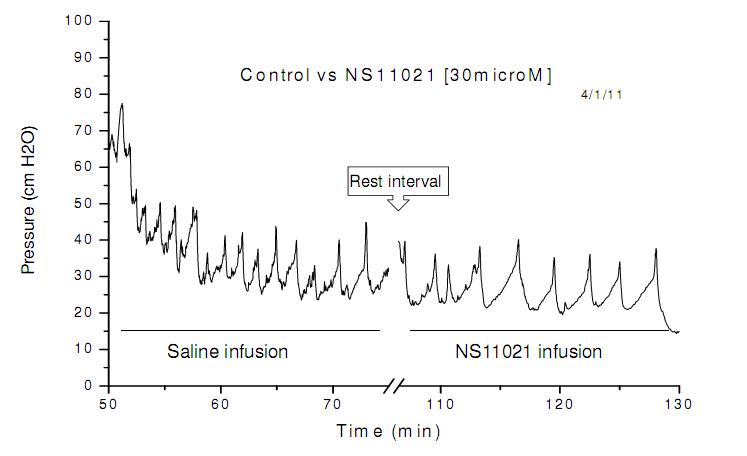|
Back to 2011 Program
NS11021, a BK Channel Opener, Effects Significant Changes on Mouse Urinary Bladder Function During Urodynamics
Hagop Sarkissian, Tom Heppner, Peter Zvara, Mark Plante, Mark Nelson
University of Vermont, Burlington, VT
Introduction:
Large conductance Ca2+ activated potassium (BK) channels are ubiquitous throughout excitable and non-excitable tissues. BK knockout mice exhibit urinary frequency and urinary leakage. Their bladders show increased intravesicular pressures, increased excitability and spontaneous contractions. Therefore, the current project sought to investigate a novel BK channel opener, NS11021, and examine its effect on bladder function in partially obstructed (pBOO), overactive and normal controls.
Materials & Methods:
Bladder domes of pBOO and normal, C57BL/6 mice, were implanted with polyethylene tubing. Subsequently, conscious, continuous cystometrography was performed. CMG had three separate phases: control/saline infusion (0.75mL/hr), an established rest period, then, continuous intravesicular infusion phase of 30microM of NS11021 solution.
Results:
In mice with pBOO or with overactivity on CMG (n=5), NS11021 infusion improved CMG parameters significantly. Quantitatively, a 43% increase in threshold pressure (p<0.001), an 82% increase in intermicturition interval (p<0.001), a 32% decrease in filling pressure (p<0.001) and a 9% decrease in peak pressure. In normal mice, i.e. those without overactivity, NS11021 had no effect.
Conclusions:
In mice with pBOO and overactivity, intravesicle infusion of NS11021, seemed to effect significant functional changes in bladder characteristics on CMG, including marked decreases of phasic, non-voiding contractions. These Results may have translational implications in the future for the treatment of bladder overactivity in certain patient populations. 
Back to 2011 Program
|